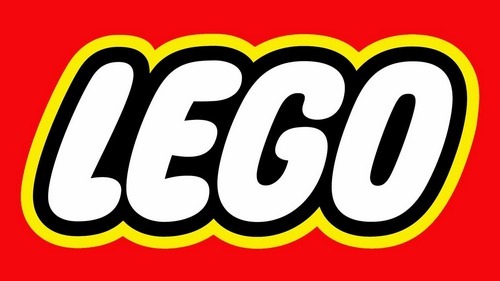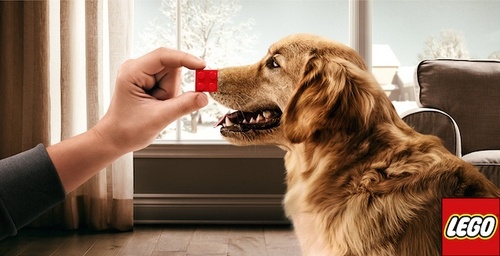The Marketing mix of Lego analyses the 4Ps of Lego, which includes the Product, Price, Place, and Promotion of Lego. Lego is a brand associated with the manufacturing of construction toys of plastic. It is a subsidiary company of its parent company, Lego Group. The company was founded in 1932 by its Danish founder, Ole Kirk Christiansen, and Lego toys were launched in the market in 1949. Lego was ranked first in February 2015 as the world’s most powerful brand, and in July of the same year, it produced nearly 600 billion units of Lego parts. Lego faces competition from the following brands.
- Leapfrog
- VTech
- Meccano
- Automoblox
- Coko
- Tyco Toys
- Best-Lock
- Mattel
About Lego
- Type: Toy manufacturer
- Industry: Toys and games
- Founded: 1932
- Founders: Ole Kirk Christiansen
- Headquarters: Billund, Denmark
- Area served: Worldwide
- Current CEO: Niels B. Christiansen
- Number of employees: Over 24,000
- Major products: Lego bricks, Lego sets, Lego games, and Lego experiences
Table of Contents
Lego Product Strategy
Lego is the flagship product of the Lego Group and includes interlocking and colored plastic bricks along with mini-figures, gears, and other parts. These can be connected and assembled to construct working robots, buildings, and vehicles. Constructing an object and taking it apart to build a different object is easy.
The Lego Group has launched thousands of Lego sets with themes like robots, space, Wild West, undersea exploration, dinosaurs, castles, Vikings, trains, and pirates. It has also licensed themes from video games, films, and cartoons like Lego Island, Lego Creator, Lego Racers, Lego Minecraft, Lego Star Wars, Lego Racers 2, Lego Indiana Jones, Lego Marvel Super Heroes, and Lego Batman. In 1999, Mindstorms was the most popular product launched by Lego.
It was a robotic line with several expansions and updates since its release. Programmable Lego-brick has ultrasonic waves, sound, light, and touch sensors. In 2009, it launched board games like Ramses Pyramid, Creationary, and Minotaurus, in which players take the help of Lego bricks to make a playing board and later play with Lego-style players. LEGOwear Clothes have been available in the market since 1993 and are manufactured with a license provided by Lego Group to Kabooki Company.
LEGO’s product mix encompasses a diverse range of categories.
The product mix of Lego in 2023 is as follows (Source)
- LEGO Building Sets: This is the core of LEGO’s product mix, featuring a variety of themes and complexity levels. They include LEGO City, LEGO Technic, LEGO Ninjago, LEGO Star Wars, and LEGO Friends, catering to different age groups and interests.
- LEGO DUPLO: Targeted at younger children, these sets have larger blocks that are easier to handle and assemble, fostering early development skills.
- LEGO Ideas: A unique line where fans submit their LEGO set ideas, and those receiving enough community support are turned into commercial products.
- LEGO Video Games: LEGO has ventured into digital gaming, with popular titles across various gaming platforms that often tie in with their physical building sets.
- LEGO Education: These products are designed for educational purposes, aiding in teaching various subjects like science, technology, engineering, and mathematics (STEM) through interactive play.
- LEGO Merchandise: Beyond building sets, LEGO also offers a range of branded merchandise, including clothing, books, and home décor.
- LEGO Digital Applications: They offer digital experiences like LEGO Life, a social network for kids, and interactive building instructions apps.
- LEGO Movies and TV Series: LEGO has expanded into entertainment with movies and TV series, which often tie back into their product lines.
Lego Place Strategy
Lego Group is a private company with its headquarters in Billund, Denmark. Its main offices are in Shanghai in China, London in the United Kingdom, Enfield in the United States, and Singapore. Manufacturing facilities are located in several places in the world. Molding is conducted at Billund in Denmark, Jiaxing in China, Monterrey in Mexico, and Nyiregyhaza in Hungary. It has plants in Kladno, Mexico, Hungary, and Denmark for packaging and brick decorations. Lego launched its official website in 1996.
This online store offers extra services like product catalogs, related information, and instruction booklets. Lego has an extensive distribution network includes operations via one hundred and twenty-five retail outlets. Of these, eight are in the United States, eleven are in Germany, thirteen are in the United Kingdom, two are in Austria, six are in France, and one in Denmark and Sweden. In India, the first Lego outlet was opened in 2014 at Chennai in Tamil Nadu by Funskool under a license agreement.
LEGO’s place strategy is:
- Global Retail Stores: LEGO has numerous flagship and branded stores worldwide, offering a complete brand experience, including exclusive sets and hands-on play areas.
- Online Sales Platform: LEGO.com is a significant sales channel, providing access to their entire product range, including exclusive and hard-to-find sets.
- Third-Party Retailers: LEGO partners with a wide range of retailers, from toy stores to general department stores, making its products widely accessible globally.
- Specialized Brand Sections in Stores: LEGO has dedicated sections in many retail outlets that enhance product visibility and consumer accessibility.
- Experience Centers: LEGO House in Denmark and LEGOLAND parks globally offer immersive brand experiences as strategic venues for product sales and other marketing strategies.
Lego Pricing Strategy
Lego has targeted children from ages 3 to 15 from upper-class and middle-class families as its target audience of customers. It has emphasized using high-quality manufacturing materials as they are handled by children susceptible to exposure to sub-standard products. Lego has adopted a mid-premium pricing policy for its high-end products to make them reasonable and affordable to its customers. It has maintained a value-based pricing strategy to create further markets by increasing its customer base.
LEGO’s pricing strategy reflects a multifaceted approach that balances brand value, product uniqueness, and market dynamics. Here’s an expert analysis:
- Value-Based Pricing: LEGO sets prices based on the perceived value of their products. Their brand reputation for quality, creativity, and educational value allows them to command a premium. This approach focuses on their products’ unique experiences rather than purely on production costs.
- Premium Pricing Strategy: LEGO adopts a premium pricing model for its products, especially for specialized and licensed sets (like LEGO Star Wars or Harry Potter). This strategy reinforces the perception of LEGO as a high-quality, desirable brand.
- Dynamic Pricing for Collector’s Items: LEGO leverages dynamic pricing for limited edition and collector’s sets. These products often start at a high price point and can increase in value over time, appealing to collectors and enthusiasts.
- Tiered Product Ranges: LEGO offers products at various prices, catering to a wide range of customers. From basic sets for beginners to complex models for advanced builders, this tiered approach allows them to attract and retain diverse market segments.
- Promotional Pricing: LEGO employs promotional pricing strategies, including seasonal discounts, bundle offers, and loyalty program rewards. These promotions help drive sales during crucial shopping periods and encourage repeat purchases.
- Geographical Pricing Strategy: Prices vary across regions, reflecting local economic conditions, currency valuations, and market demand. This approach helps LEGO maximize profitability in new markets while staying competitive globally.
- Cost-Plus Pricing for Educational Products: LEGO may use a cost-plus pricing strategy for its educational range. This takes into account the research and development invested in creating products that are both fun and educational, particularly those that incorporate technology and programming elements.
- Psychological Pricing: LEGO also employs psychological pricing techniques. For instance, pricing products slightly below a round number (e.g., $99.99 instead of $100) makes them appear more affordable, effectively encouraging purchases.
LEGO’s pricing strategy is a sophisticated mix of value perception, market segmentation, and dynamic adjustment to market conditions and consumer preferences. This strategy underscores the brand’s premium status and ensures accessibility to a broad customer base, balancing profitability with market expansion.
Lego Promotion Strategy
Lego has undertaken various promotional activities to gain brand recognition, like marketing and advertising via television, online mediums, print magazines, and in-store efforts. Lego has also actively participated in several events to gain brand exposure. It released the Lego Minifigures series for the Summer Olympics 2012 and mascots Tom and Vinicius for the Summer Paralympics 2016 and Olympics 2016, respectively. As part of its promotional activity, it has launched My Lego Network for social networking. It includes badges, ranks, blueprints, and items that can be earned after completing specific trophies and tasks. Lego celebrates its every single store opening with weekend-long event celebrations.
LEGO’s promotion strategy is characterized by a dynamic blend of innovative marketing campaigns, engaging social media presence, and interactive customer experiences. They leverage partnerships with popular franchises for co-branded promotions, utilize digital platforms for engaging content, and create immersive brand experiences through LEGO stores and theme parks. LEGO employs educational and community-based marketing initiatives to strengthen brand loyalty and appeal to a diverse audience, from children to adult enthusiasts.
Some Recent Video ads and Print ads for Lego are:
https://thebrickblogger.com/2024/01/january-2024-new-lego-sets-promotions/
Liked this post? Check out the complete series on Marketing Mix


dear Sir,
Hey, my name is Keith Yuen, a part-time University student in Marketing management degree in Hong Kong, i would like to ask if you don’t mind this is blunt that i need some insight about what co-creationing actions would Lego possibily Lego take into consideraion in upcoming 2020? i would really appreciated that if you can feedback my directly at my email. Thanks you so much for you column for as well giving my many insights on my essay writting, thanks again.
yours,
Keith Yuen